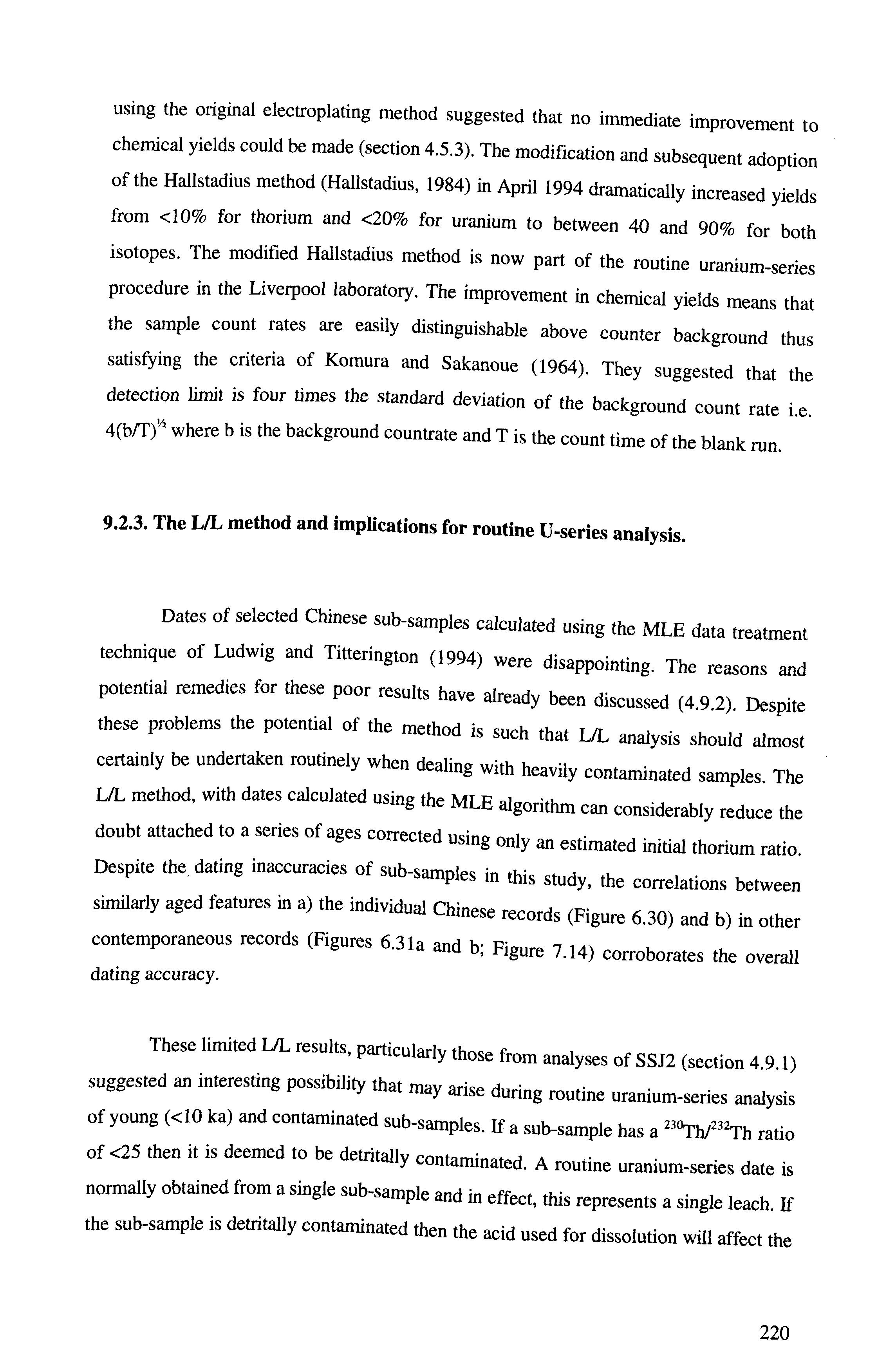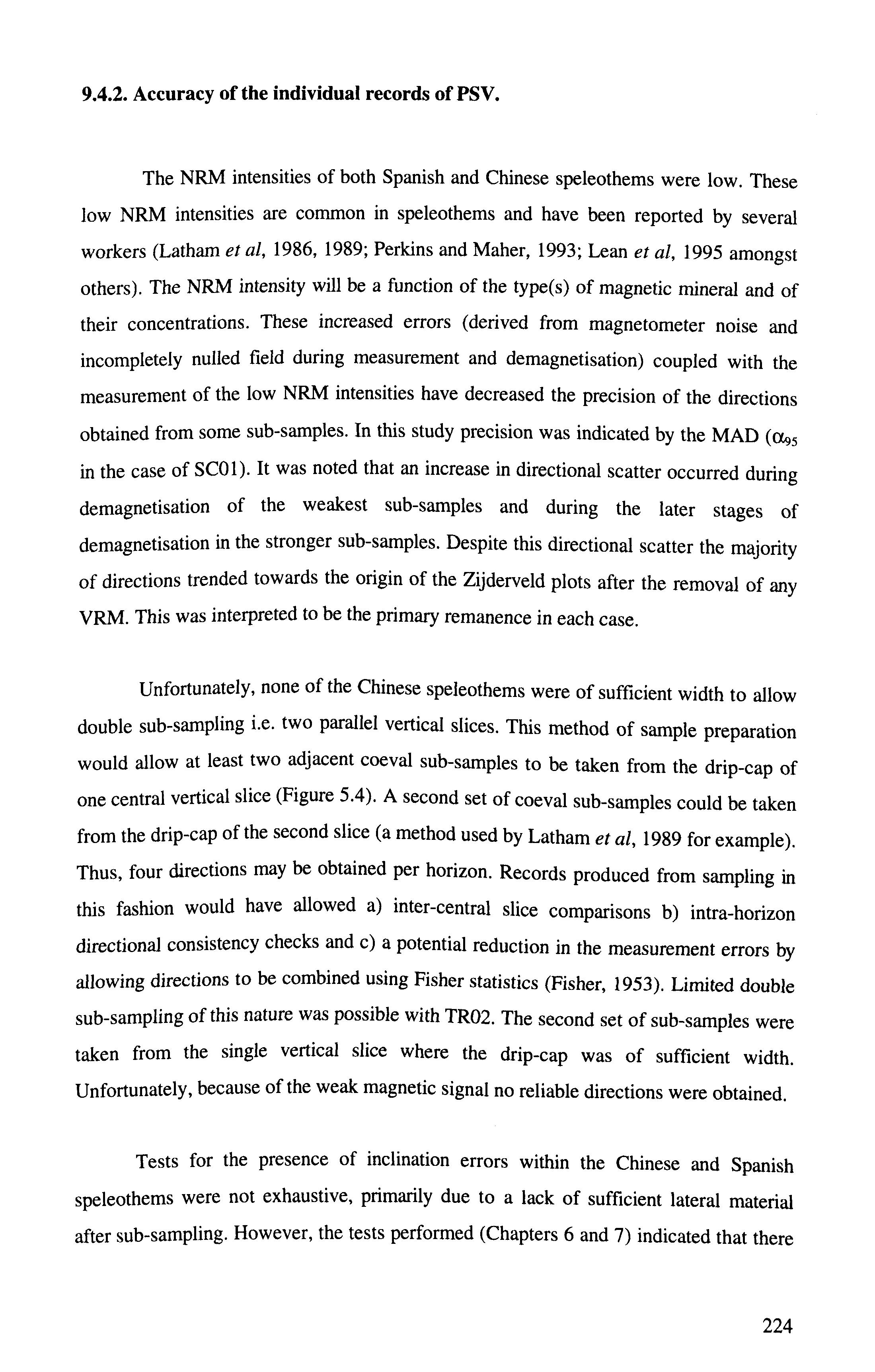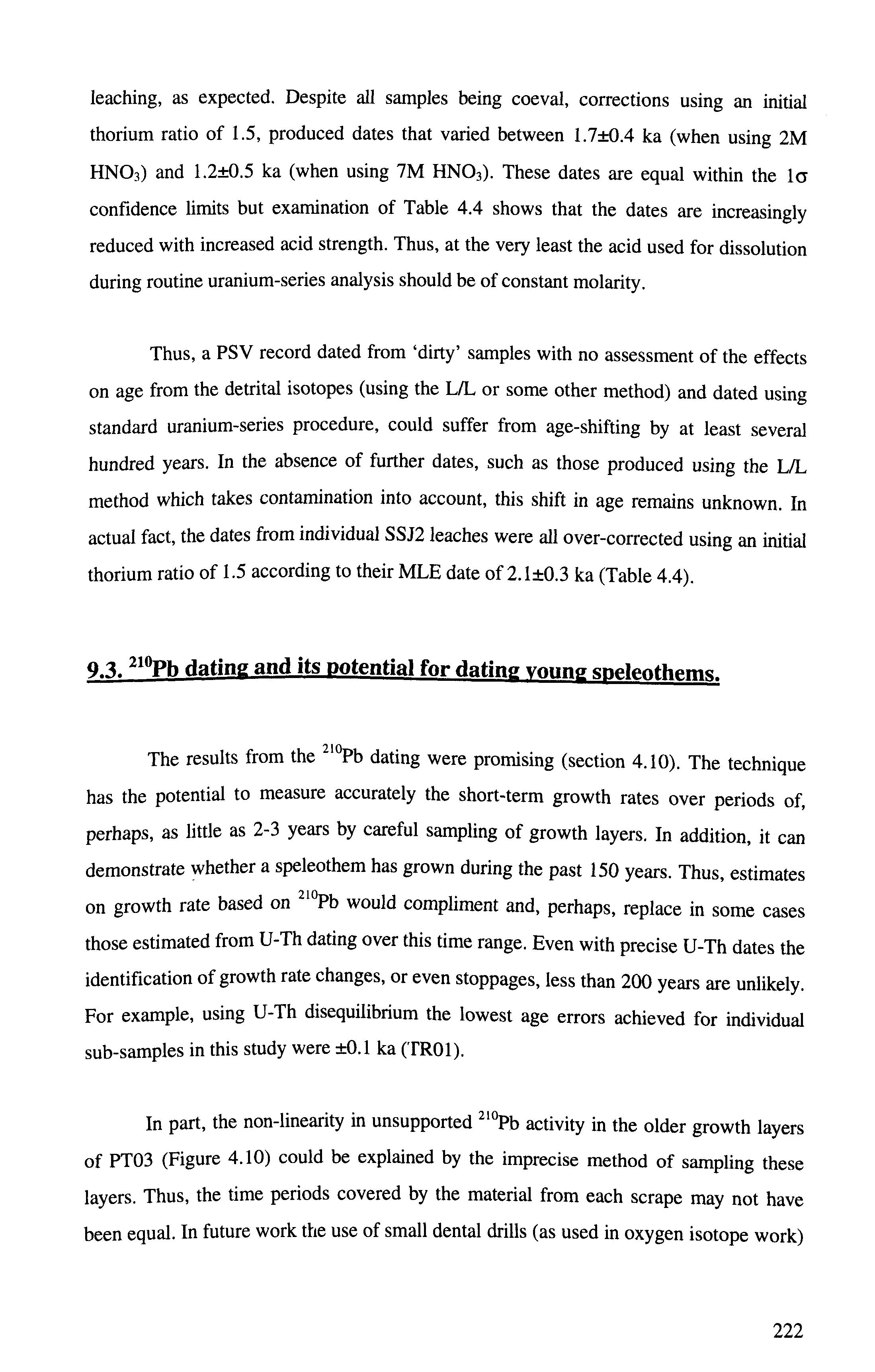
3 minute read
9.6. Future studies on speleothems
organic compounds (humic and fulvic acids) which chelate iron (II) and iron (III) giving
rise to a CRM. These compounds release iron in a reduced state upon calcite crystallisation to form SD magnetite (Latham and Ford, 1993). However, the processes
Advertisement
of de-chelation and production of authigenic magnetite in caves have not been studied
fully (Perkins, 1993; Latham and Ford, 1993). However, in this study, the relationship
between the quantity of undissolved detritus and the NRM intensity (section 8.6)
particularly in the case of the Xingwen speleothems, does suggest that a DRM is
primarily responsible for the remanence. That is not to say a CRM does not also exist but
rather that its presence may be masked by the greater contribution from a DRM.
Q.6. Future studies on speleothems.
Many suggestions for future work have been discussed in their relevant chapters
but those with the most potential are mentioned here. This study probably represents the
most complete series of PSV records of speleothems from a single locality. The results
suggest that similar sampling schemes in other areas could yield similar suites of results which may expand the global coverage of speleothem PSV data.
Because the potential exists for detrital contamination to affect the ages of young
‘dirty’ samples (section 9.2.3) the L/L method should be undertaken as a matter of
routine Should time and facilities allow, the TSD method (section 4.4.3.3) should be
used in preference to the L/L method. However, the frequent lack of sufficient coeval
material in the case of speleothems means that these methods are often not possible when using alpha-spectrometry. The surest way to undertake L/L analysis on contaminated
speleothems would be with mass-spectrometry primarily because of its increased measurement accuracy. In addition, smaller samples of <1 gram can be used which
would allow many coeval leaches to be performed. Thus, the accuracy of any fitted isochron would be increased.
The U-Th method and also the 210Pb method, have been shown to be effective in
dating modem speleothems with active drip-caps. However, below 5 ka the lower limits
of the U-Th method are being approached and, with the presence of contamination, the errors in measurement are increased especially with low uranium concentrations. Thus, it would be interesting to attempt to fill the gap in dating between the 2l0Pb and U-Th
methods using another method, such as 226Ra excess dating, which is unaffected by
detrital contamination (Ivanovich and Harmon, 1992; Latham et al, 1986). The 226Ra excess method can be used for samples up to ~10 ka (Ivanovich and Harmon, 1992) and within this age range any 226Ra produced from decay of 2»rh is negligible. However, it is assumed that the specific activity of 226Ra down the stalagmite remains the same as the measured value in the youngest (top) sample. In active speleothems, 2,0Pb ages obtained
from gamma counting of the upper surface o f a speleothem could confirm its modernity. The measured 226Ra activity from this upper layer sets the activity at !-(). Thus 226Ra
activity of further samples down the speleothem can be calculated using the following
equation:
t = (1602/ln2).ln(y4o / Ax ) 9.1
where A , is the activity of 22‘Ra in the top layer (i.e. ,=0) and Ax is the 22‘Ra activity in a

layer distance x down the stalagmite. Thus, depending on the sampling density, it ought to be possible to resolve growth rate changes on a fine scale. Age eoncordancy checks
could also be performed using U-Th disequilibrium dating over the entire age range (errors permitting). The use of the 2,0Pb and 226Ra , , ,p Ka methods would also save a great deal of time as they require minimal sample dre n a ra tio n _ p preparation, no spike, and depending on the isotope concentrations, require less than five dav« forys tor the gamma counting process.
The method outlined in section 8 fi to __8,0 • , , to determme whether or not the NRM is carried predominantly by a DRM or a CRM n«;™ u, « . usin§ weight % of undissolved detritus requires additional testing. There have been mam, H 6 avc oeen many speleothem studies and a little cooperation between the various workers in sunni-mW i v in suPPiymg speleothem off-cuts from a wide variety of localities would allow this work to hp ... 3 lo De achieved without the need for further sampling from caves.








